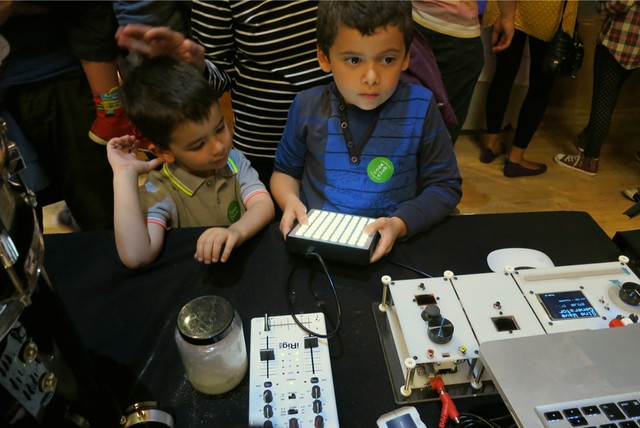Whitney Triptych Development
Online documentation and supporting notes of the development of Whitney Triptych.
Exploring the counterpoint in J. S. Bach’s Fugue in F minor BWV 881 by visualising the harmonically interdependent right and left hand parts of the Prelude each as a ‘Whitney Rose’ pattern with a third, central rose displaying the harmonic relationship between them.
At Seeing Sound 3, I got to meet experimental animator Larry Cuba – Executive Director of the visual media non-profit organisation, the Iota Centre in Los Angeles, US and the computer programmer for John Whitney Sr.’s 1973 film, Arabesque. Although I’d had an email exchange with him prior to the conference, it was great to actually get the opportunity to hear his keynote address ’Generative Animation, A Personal History’ and talk face-to-face. Larry asked that I send him high def versions of the work I’d screened as part of my performance with Ben Lycett.
I’d also been wanting to send an example of Whitney Triptch to composer, writer and video artist Bill Alves. We’d met at Understanding Visual Music ’13 in Buenos Aires and it was Bill who had actually suggested using my visualisation techniques to explore counterpoint.
This seemed a good opportunity to write up some background notes about the work too…
… including its limitations:
“Lastly, but most significantly, while Bach’s harpsichord may not have been tuned to 12-ET tuning – the MIDI file is. So despite my rationalisation above, the actual ratios generated for each note against the tonic of F is currently based on 12-ET tuning and not on a Just Intonation based tuning system…”
New ‘new media’ works are frequently prototypes – it’s the subsequent iterations that enable the work to be stabilised and refined. Wanting to overcome this significant flaw in Whitney Triptch, I researched and developed my own solution for enabling micro-tuning within Ableton Live.
Whitney Triptych v1.1
This is a next stage development of a piece that featured as part of a performance at Seeing Sound 3, Bath Spa University, UK, 24th November 2013.
While Bach’s harpsichord may not have been tuned to 12-ET tuning – the MIDI file is. So I’ve attempted to forge a more ‘coherent’ relationship between the music and the visualisation by using a custom-made micro-tuning device developed using a Teensy 2.0 to ‘retune’ the MIDI score to a Just Intonation based scale proposed by Thomas Young circa 1799.
Within the OpenFrameworks visualising sketch I compare the incoming ‘retuned’ notes of the Bach fugue played via Ableton Live 9, with the left and right-hand parts separated onto their own MIDI ports. I compare the successive notes of each of these parts to an F3 tonic for the left and F4 tonic for the right hand part and ‘scrub’ each respective ‘Rose’ to that specific point along it’s progression i.e. if the incoming note was an octave below the tonic the ratio would be 0.5 – half way along the algorithm timeline. Finally, I calculate the ratio between the last incoming note from each part and use this value to ‘scrub’ the central Rose to that specific point along it’s timeline.
Whitney Triptych v1.2
Following recent email exchanges with Aaron Hunt of H-Pi instruments, in which he commented that notes were sounding without release, I’ve added MIDI Note Off to my Teensy 2.0 based hardware micro-tuner. I’d omitted it to date because the visualisation doesn’t currently require Note Off info – though the Kontakt instrument obviously does.
Aaron also noted some occasional wrong notes. I thought it might be a glitch in my code, but it turned out to be an error in the Kontakt harpsichord instrument I was using. I’ve since changed to an alternative and it seems to have resolved the problem.

